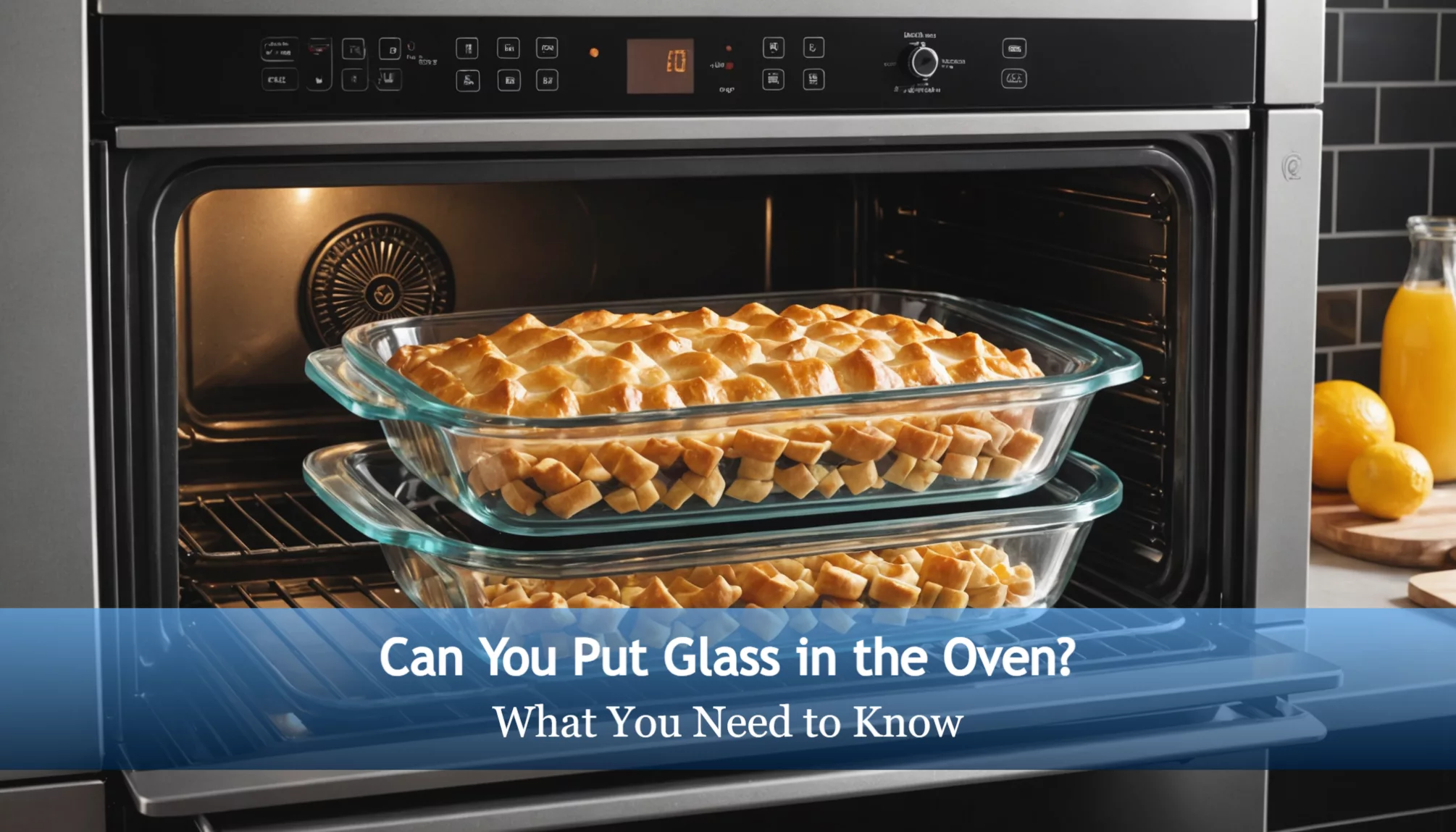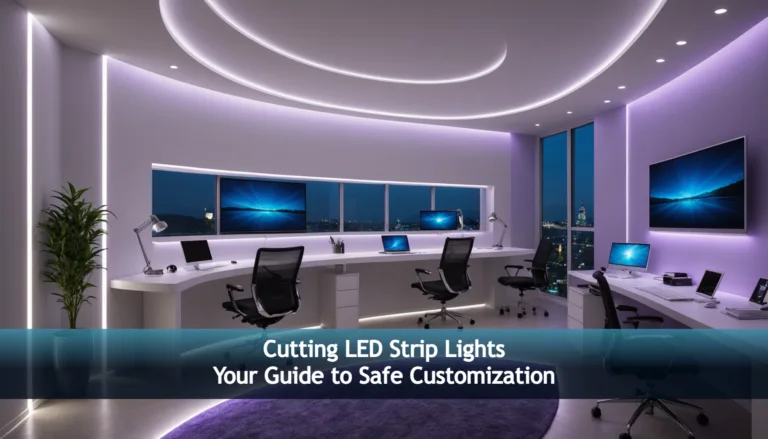Can You Put Glass in the Oven? What You Need to Know
When it comes to cooking, many kitchen mysteries can leave you scratching your head, especially the question: Can You Put Glass in the Oven? It’s a crucial topic for any DIY kitchen enthusiast because using the wrong type of glass can lead to dangerous breakage or ruined meals. Understanding how glass can handle high temperatures is not just a fun fact; it’s an essential skill for safe and successful baking!
If you don’t know what types of glass can withstand the heat, you might end up with a shattered mess in your oven. In this article, we’ll explore which glassware is oven-safe, the science behind how glass reacts to heat, and tips to prevent those frustrating cracks. Get ready to unlock the secrets of baking with glass so you can whip up delicious dishes without worry!
Can You Put Glass in the Oven?
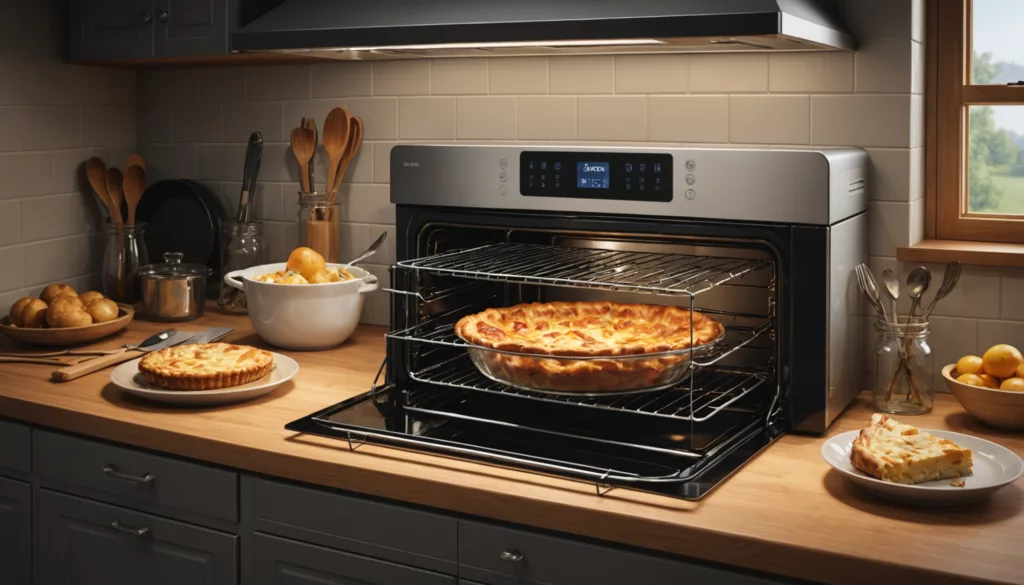
Using glass bakeware in the oven is often safe and convenient, but you need to know which types are suitable to avoid accidents. This guide explains the types of oven-safe glass, dispels myths about glass cracking, and details how glass behaves under heat.
Understanding Glassware: Which Types are Oven-Safe?
Not all glass is safe to use in the oven. There are two main types to consider:
- Borosilicate Glass: Known for its ability to handle sudden temperature changes, this glass resists thermal shocks. Brands like Pyrex use borosilicate glass, making them safe for oven use.
- Soda-Lime Glass: More common in household items, this glass is less resistant to thermal shock. It can be used in the oven only if specifically labeled as oven-safe. Always check for these labels to ensure safety.
Choosing the right glassware is crucial for successful baking and cooking.
Common Misconceptions: Can Glass Crack or Break in the Oven?
A common myth is that all glass is oven-safe. This is incorrect. Glass can crack or break if not used properly. Here’s why:
- Sudden Temperature Changes: Placing hot glassware on a cold surface or putting cold glass directly in a hot oven can cause it to shatter.
- Non-Oven-Safe Glass: Using glass without an oven-safe label can lead to cracking or shattering.
Always use glass marked as oven-safe to avoid these issues.
The Science of Heat: How Glass Reacts in High Temperatures
Glass expands when heated and contracts when cooled. Quick temperature changes can stress the material, leading to fractures. Key points include:
- Thermal Expansion: Rapid changes in temperature can cause stress fractures in glass.
- Temperature Limits: The melting point of soda-lime glass is about 1400°C (2550°F), but it should not face extreme temperature shifts.
Understanding these properties ensures safe and effective cooking with glass.
References
Tips for Using Glass Cookware in the Oven Safely
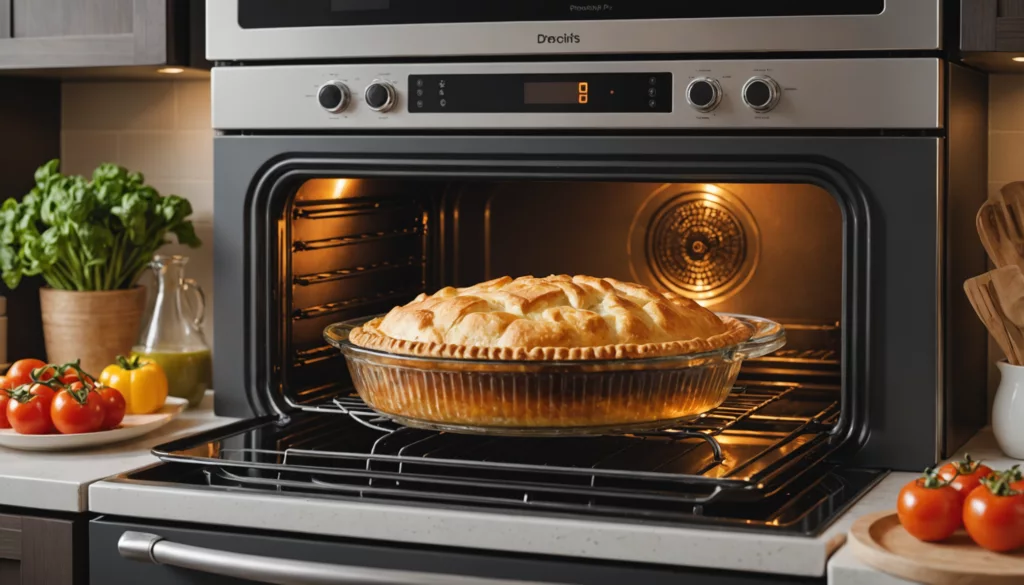
Using glass cookware in the oven can be effective, but safety is key. Follow these tips to prevent accidents while cooking with glass bakeware.
Essential Tips to Avoid Glass Breaking in the Oven
- Gradual Heating: Always preheat the oven before placing glassware inside. This helps prevent sudden temperature changes that might cause thermal shock. For instance, don’t place a glass dish into a cold oven, as it might crack when the oven heats up.
- Temperature Limits: Stick to the manufacturer’s recommended temperature limits for glassware, usually around 425°F (220°C). Going beyond these limits can weaken the glass.
- Avoid Rapid Changes: Never move hot glassware to a cold surface or into cold water. For example, putting a hot Pyrex dish in a sink of cold water can make it shatter. Let glassware cool to room temperature before heating or cooling it.
- Proper Handling: Use oven mitts or pot holders when handling hot glassware to avoid burns.
Best Practices for Cooking with Glass: Temperature Gradients
- Even Cooking: Don’t overcrowd glassware in the oven. Leave space around dishes for heat to circulate, which helps cook food evenly and reduces uneven heating risks.
- Add Liquids: Adding a small amount of water to the bottom of a glass container can retain moisture, especially in casseroles or baked dishes.
- Monitor Cooking Times: Cooking times with glass may differ from metal pans. Keep an eye on your food to avoid overcooking or burning.
Signs of Danger: How to Identify if Glassware is Safe
- Check for Defects: Inspect glassware for cracks, chips, or scratches before use. Damaged glass is more likely to break when heated.
- Manufacturer’s Labels: Look for labels or markings that indicate the glassware is oven-safe. Brands like Pyrex and Anchor Hocking often include an oven-safe symbol.
- Avoid Non-Tempered Glass: Non-tempered glass can shatter at high temperatures. Ensure glassware is labeled as heat-resistant or oven-safe.
By following these guidelines, you can safely enjoy the benefits of using glass bakeware in the oven. Always choose the right type of glassware and handle it with care.
The Dangers of Glass Cracking in the Oven
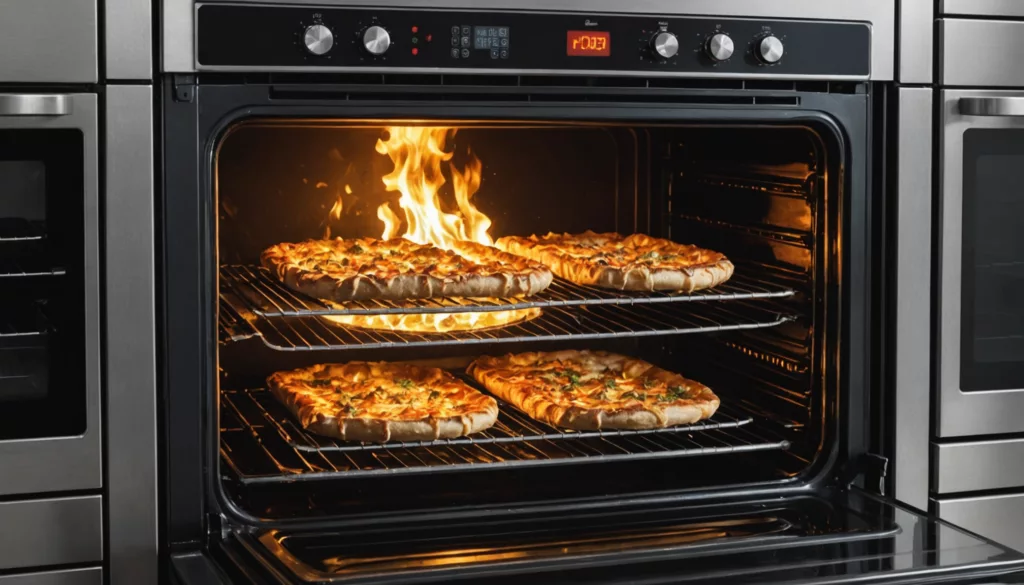
Glass cookware is popular for its convenience, but it can crack or break in the oven. Understanding why this happens helps you avoid these risks.
Factors That Cause Glass to Crack When Heated
- Thermal Shock: This occurs when you place cold glass, like from the freezer, into a hot oven. The sudden heat change can cause the glass to fracture.
- Manufacturing Defects: Flaws such as bubbles or weak spots in the glass can make it shatter more easily. Always inspect glassware for defects before use.
- Overheating: Every glass type has a maximum temperature limit. Exceeding this can lead to breakage. Check the manufacturer’s instructions for safe temperature ranges.
- Uneven Heating: Uneven heating can stress glass. Avoid putting glass directly on a hot element to prevent this issue.
What to Do if Your Glassware Does Break in the Oven
If your glass breaks, follow these steps for safety:
- Immediate Actions:
- Turn off the oven to stop further heating.
- Let the oven cool before removing glass pieces.
- Use protective gloves to handle broken glass.
- Cleaning Up:
- Use a utensil or dustpan to remove large pieces.
- Sweep smaller shards with a broom and dustpan.
- Wipe the area with a damp cloth to collect tiny fragments.
- Disposal:
- Place broken glass in a sturdy container to prevent piercing through a bag.
- Dispose of according to local regulations.
By knowing these factors and steps, you can use glass safely in the oven. Always look for manufacturer instructions to ensure a secure cooking experience.
Choosing Oven-Safe Glassware
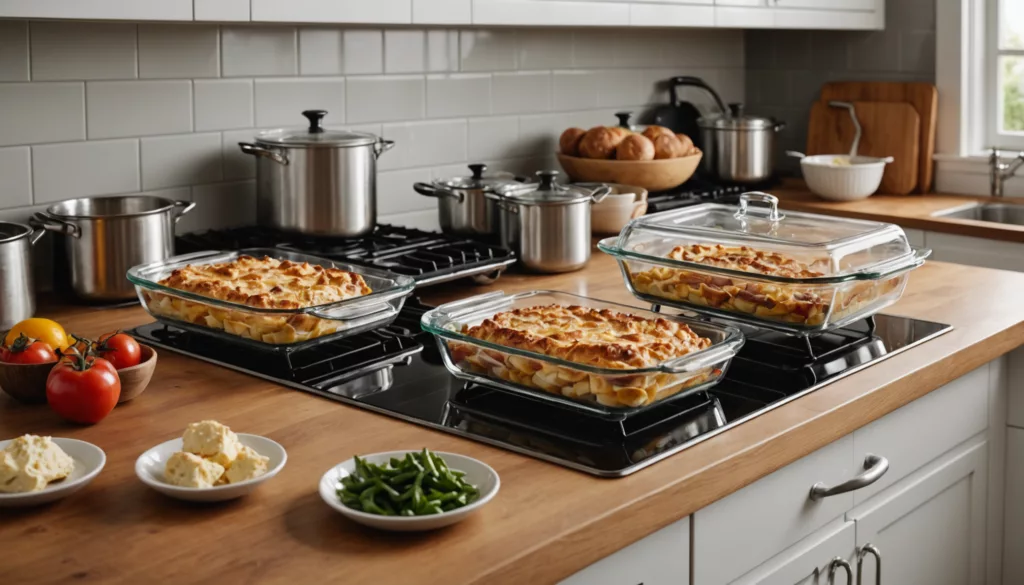
What Makes Glass Cookware Oven Safe?
Selecting the right glass cookware for oven use involves understanding key features. Not all glass can handle the high temperatures in an oven. The primary oven-safe glass types are borosilicate and tempered soda-lime glass. Each offers unique qualities for high-heat cooking.
- Borosilicate Glass: This type resists thermal shock, meaning it won’t break with sudden temperature changes. Brands like Pyrex use borosilicate glass because it’s durable and safe for baking. (Wikipedia)
- Tempered Soda-Lime Glass: This is more common but less resistant to thermal shock. If labeled oven-safe, it can generally be used in ovens, though it may still crack with extreme temperature shifts. (Luckyglass)
Key Features of Oven-Safe Glass Cookware:
- Thermal Shock Resistance: Handles quick temperature shifts without breaking.
- Labeling: Look for the “oven-safe” symbol to ensure safety.
- Durability: High-quality glass resists scratches and breakage under normal conditions.
These features help you choose the best glassware for your cooking needs.
Top Brands for Reliable Oven-Safe Glass Cookware
Several brands are known for producing quality oven-safe glass cookware:
- Pyrex: This trusted brand uses borosilicate glass, noted for its resistance to thermal shock, making it ideal for baking and cooking.
- Anchor Hocking: Offers a range of oven-safe glass bakeware designed for durability and consistent use.
- CorningWare: Provides glass cookware engineered specifically for oven use, with a non-porous surface that resists food build-up and cleans easily.
These brands are leaders in the glass cookware market, offering safe, durable, and high-quality options. Always check for oven-safe labels to ensure safe cooking practices.
Ongoing Developments in Glass Cookware Technology
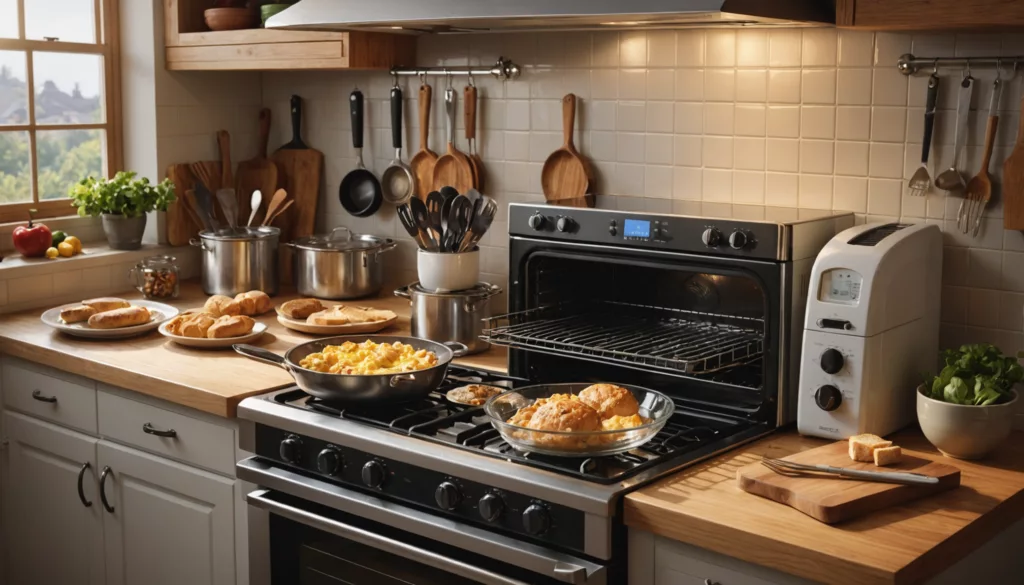
Innovations in Glass: Safer Materials for Baking
Glass cookware is evolving to be safer and more durable. Advancements in borosilicate glass, like those from Pyrex, allow it to withstand higher temperatures and resist thermal shock. This makes it a reliable choice for baking. Unlike regular glass, borosilicate glass can handle sudden temperature changes without breaking.
Tempered glass has also improved. Made stronger through a special process, it can endure higher heat without shattering. These innovations mean that glass dishes are now safer and more effective for cooking.
Expert Recommendations: Best Practices for Safe Glass Use
Experts highlight the importance of using the right glassware. Here are some best practices for using glass in the oven safely:
- Select Oven-Safe Glass: Check for an oven-safe label. Brands like Pyrex and Anchor Hocking are trusted for their quality.
- Avoid Sudden Temperature Changes: Do not put cold glass directly into a hot oven. Let it reach room temperature first to prevent cracking.
- Preheat the Oven: Always preheat before placing glassware inside. This helps avoid uneven heating and reduces breakage risk.
- Inspect Regularly: Look for cracks or chips before use. Damaged glass is more likely to break when heated.
Following these guidelines will help make glass cookware safe and effective for baking. Stay informed about new materials in glass technology to continue improving cooking safety.
Conclusion
In summary, using glass in the oven can be safe and effective if you know what to look for! Remember that only tempered glass or glass labeled as oven-safe should be used to avoid cracks or breaks. It’s also important to understand the science behind how glass reacts to heat, like the thermal stress it can experience.
To keep your glass bakeware safe, always follow best practices, such as letting it come to room temperature before placing it in the oven. With these tips, you can confidently use your glass dishes for delicious meals and snacks. Keep exploring and learning about the best bakeware options to become a kitchen pro!
FAQs
1. Can You Put Glass in the Oven?
Yes, you can put specific types of glass in the oven. Tempered glass and borosilicate glass, like Pyrex, are safe to use in the oven. These types withstand high temperatures. Avoid using regular glass, as it can crack or break when exposed to oven heat. Always look for an “oven-safe” label on glassware before use.
2. What Types of Glass Are Considered Oven-Safe?
Two main types of glass are safe for oven use:
- Borosilicate glass: Known for its superior resistance to thermal shock, this type of glass can withstand rapid temperature changes without breaking. It’s used by brands like Pyrex due to its durability and safety for baking.
- Tempered soda-lime glass: While more common, this type is less resistant to thermal shock. Products made from tempered soda-lime glass may be labeled “oven-safe,” indicating they can generally be used in ovens. However, they are still susceptible to cracking under extreme temperature fluctuations.
3. Can Glass Crack or Break in the Oven?
Yes, glass can crack or break due to sudden temperature changes, called thermal shock. For example, moving a glass dish from the fridge directly to a hot oven increases breakage risk. Let glass reach room temperature before placing it in a preheated oven.
4. What Are the Signs of Unsafe Glassware?
Check glassware for these signs of damage:
- Cracks or Chips: Any visible damage means the glass may not be safe.
- Discoloration: A change in color can indicate weakness.
- Uneven Surface: Warped areas can lead to breakage when heated.
5. What Should Be Done If Glassware Breaks in the Oven?
If glassware breaks:
- Turn Off the Oven: Stop it immediately to prevent further accidents.
- Allow to Cool: Let the oven and glass cool before cleanup.
- Use Caution: Carefully remove broken pieces with gloves to avoid cuts. Dispose of them safely.

